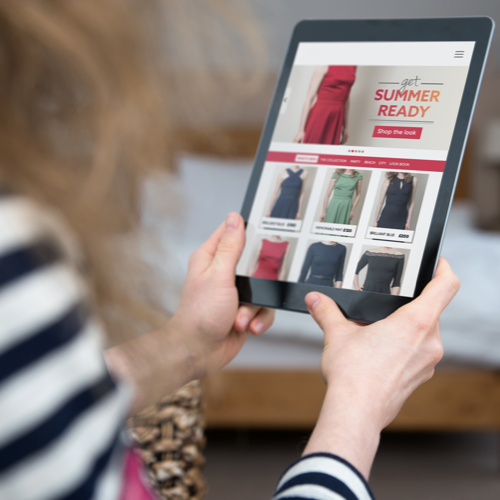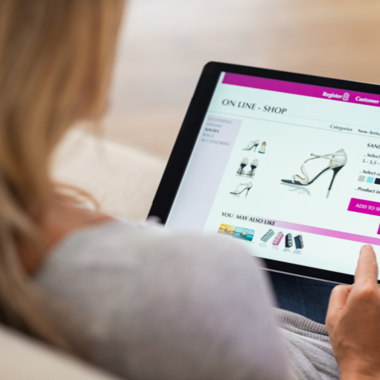
- Five minutes read
eCommerce checkouts: Driving incremental sales
As competition heats up online and leading retailers look to capture sales and keep customers coming back, key trends are emerging for delivering a dynamic, sales-focused checkout experience.
Competition is fierce in today’s retail landscape, especially in the eCommerce space. More and more retailers have brought their business online to meet evolving customer expectations and, along with that, global competition continues to penetrate new markets.
In the world of eCommerce, it is no secret that cart abandonment is an ongoing concern for retailers. We wanted to know how much of a concern it is, so for a recent edition of our Lost in Transaction research series we surveyed 600 online small and medium-sized businesses both in North America and Europe to discover the current attitudes to this issue. The results were definitive; 96% of online retailers advised that abandoned transactions do occur at their checkout and 41% said that this posed a significant problem for their business.
There are numerous reasons for abandoned transactions, including some that are beyond the influence of a retailer such as a consumer’s shopping habits. However, retailers are also aware that the limitations of their checkout are a contributor to their abandoned transactions rate. 30% of retailers said that customers were not prepared to pay extra fees or charges on their purchases, and 21% said that a lack of payment options was an issue.
Adding pay later solutions
Pay by invoice is overwhelmingly the preferred payment method in the German market, but it’s not for everyone, and more and more consumers are asking for more options at the check-out. Successful retailers have begun to meet consumer demands and increased competition by adding alternative payment solutions such as instalment payments, where the consumer immediately receives the goods or services once they are credit approved and have agreed to a repayment plan.
Instalment payments present a clear benefit to consumers that want to take advantage of the offer of credit but aren’t convinced by the potentially high cost and less structured repayment plans of credit cards and need more time than traditional invoice offerings provide. And by offering another attractive payment option that gives consumers the option to defer full repayment, retailers should see a positive impact on their cart abandonment rate.
Last year, we asked online businesses in the US, Canada, UK, Germany, and Austria about the payment methods they current accept, and those that they are planning to offer within the next two years. The results of this research were published in our Lost in Transaction: The future of payments for SMBs report.
One in six (16%) SMBs told us that they already offer instalments as a payment option, and according to our data the total number of SMBs offering instalments is expected to grow by 80% in the next two years.
And, it has also been reported that instalment payments also drive increased shopping cart volumes. According to research from Quellen, instalment payments can increase shopping cart volume by up to 11%.
Reduction in shopping cart abandonment, little to no risk for the retailer, and increased sale. That’s a win-win.
Delivering a personalised experience
For retailers, satisfying these often-competing business priorities of offering more payment methods without compromising their brand experience can be troublesome.
But white label payment solutions enable the merchant to maintain full control over the appearance and user journey at the checkout and beyond, throughout the invoice or instalment experience. Partnering with a service provider that specialises in this level of personalisation gives businesses the benefits of adopting a best-in-class solution but also the continuity benefits of building their own offering.
This includes the dunning process, by which businesses correspond with their customers to manage collections on outstanding accounts, and notify them when a due payment hasn’t been completed. As one of the main brand communication channels between a retailer and customer once a pay later repayment schedule has been agreed, the inability to personalise this messaging is a significant detractor from maintaining brand experience.
In addition to maintaining brand presence throughout the checkout, the flexibility of service offered when integrating a pay later solution is also critical. No two businesses are the same, yet many pay later solutions offer a single product to all merchants. Alternatively, a fully customisable pay later solution enables merchants to tailor the payment option to suit their business and their customers.
There are many pay later solutions in the market, but the level of control afforded to merchants over their checkout differs significantly.
By partnering with a solution provider that offers a customisable, white label solution, businesses can integrate instalment payments in the way that best suits their business and their customers.
So what does that mean in practice? Here are some ways that online businesses can customise their pay later options with Paysafe Pay Later:
1. Payment due on delivery
For merchants that sell customised goods that are made to order, consumers may have to wait a substantial period of time for their purchase to be shipped. And this period may even be extended if the merchant is depending on a supply of materials to fulfil the order and this is delayed. With many pay later solution providers the repayment period automatically begins once the order is placed; with Paysafe Pay Later the repayment period only begins once the goods are shipped. For businesses supplying custom goods this makes a significant difference to overall customer satisfaction.
2. Merchant can ‘buy down’ the consumer pricing
Often the cost of making payments on instalment for the consumer are fixed; it is set by the payment services provider, so the merchant has no influence over this. With Paysafe Pay Later merchants can elect to absorb a portion of costs normally borne by the consumer, thus reducing the payment rate for their customers. Particularly beneficial for merchants wanting to offer seasonal or product campaigns
3. Merchants have the option to temporarily absorb the cost of penalty fees for late payments
During periods such as the holiday season, a merchant can elect to give consumers an extended payment period. Not only does this gives their customers some respite during a stressful time of year but also avoids customer complaints about being charged for late fees if their order is incorrectly fulfilled, which is more likely at this busy time of year.
Find out more about how Paysafe Pay Later can enhance your checkout today.




